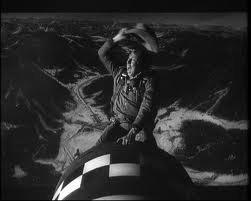TromboneAl
Give me a museum and I'll fill it. (Picasso) Give me a forum ...
- Joined
- Jun 30, 2006
- Messages
- 12,880
I'm working on a subplot for my book.
Here's the scenario: Present day. An EMP-like phenomenon has wiped out all electronics from the east coast to Nevada. California is OK.
The military in CA needs to get a message to DC ASAP, and can't do it via radio (duh), so they want to send the fastest plane from CA to DC. Which option do you like best?
Option 1: The SR-71 has been retired, but they find one (from mothballs) and send it.
Option 2: Lookheed has a secret SR-72 prototype, and they send it, although it has major bugs.
Option 3: Those other options are too ridiculous, just send a B1 bomber.
I want the mission to have some major problems, such as a fuel problem. Consider this: all the GPS satellites are out of commission, and the plane would arrive in DC when it's dark. No lights on the ground.
So, how would the pilot navigate in that situation? Would it be possible? Perhaps dead reckoning from the last known visual landmark? Finding a dark airport impossible? Remember that all electronics on the ground are kaput.
Finally, what are some typical kinds of military SNAFUs that could threaten a mission like that?
Thanks for the help,
Al
Here's the scenario: Present day. An EMP-like phenomenon has wiped out all electronics from the east coast to Nevada. California is OK.
The military in CA needs to get a message to DC ASAP, and can't do it via radio (duh), so they want to send the fastest plane from CA to DC. Which option do you like best?
Option 1: The SR-71 has been retired, but they find one (from mothballs) and send it.
Option 2: Lookheed has a secret SR-72 prototype, and they send it, although it has major bugs.
Option 3: Those other options are too ridiculous, just send a B1 bomber.
I want the mission to have some major problems, such as a fuel problem. Consider this: all the GPS satellites are out of commission, and the plane would arrive in DC when it's dark. No lights on the ground.
So, how would the pilot navigate in that situation? Would it be possible? Perhaps dead reckoning from the last known visual landmark? Finding a dark airport impossible? Remember that all electronics on the ground are kaput.
Finally, what are some typical kinds of military SNAFUs that could threaten a mission like that?
Thanks for the help,
Al

